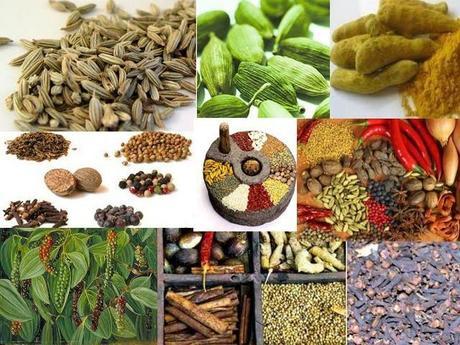 Thiruvananthapuram: In the early ages, Kerala was the chief center of India’s spice trade with the West. Kerala highlights the ancient trade route to the modern age.
Thiruvananthapuram: In the early ages, Kerala was the chief center of India’s spice trade with the West. Kerala highlights the ancient trade route to the modern age. In order to add charm to the tourism campaign, the Department of Tourism is planning a ‘Spice Route Heritage Project’ that was presented at the recently concluded 6th International Meeting on Silk Road Tourism in China.
A newsletter from the Tourism Department says, “The project plans to open new aspects in the field of tourism and historical research in Kerala.” Taking an indication from the ongoing Muziris Heritage Project, the spice route project will take the modern travelers to the past. “It will reconnect the past and the present of Europe-Kerala trade link,” said, M S Venugopal, Additional Director (Planning Project) in-charge, Dept of Tourism. The spice trade in Kerala dates back to more than two thousand years ago. Sources say that Kerala was in connection with the rest of the world since BC 6,000. It is believed that the international traders first landed in India at Muzris, of primeval Kerala. Thus the people from countries like Yemen, Rome, Afghanistan and many more started to visit Kerala. In the modern world, the history of spice trade with western countries initiated with the arrival of renowned Portuguese explorer, Vasco da Gama, in Kappad in the year 1498. Following the Portuguese, the Dutch and the British ended in the spice land of India and formed their respective colonies at his place. The chief reason behind the colonization was the huge market of spices in Kerala. The rich history of Kerala has become a fine specimen of cultured museum due to the spice route. The route initiates from Europe, touching Africa, Arabia and finally concludes at Kochi. “Around 31 countries are linked with this route,” said Venugopal. The planned Spice Route Heritage Project will link almost all the districts in Kerala. The places of the state that would be included in the route are Kozhikode, Beypore, Kollam, Anchuthengu, Allappuzha, Kochi, Thiruvananthapuram, Ponnani, Parappanangadi, Panthalayani, Kannur, Thalassery and Beal. In addition to this, the ancient trade routes in North Kerala will be included to the Muziris Heritage Project. Also that, the Spice Route Heritage Project would conned the cardamom and tea cultivation in Wayanad, Ancharakkandy, which is Asia's largest cinnamon farm and spice trading centers at Valiyangadi in Kozhikode, the dhow building center at Beypore and the planned Kunhali Marakkar Museum at Kottakkal. The chief attraction of this project will be Malabar, an important trade center in the early times, as it will allure more tourists to the different variety of spice products, plantations, inland waterways and historical spots. The reports say that the government of Kerala has already agreed to allot Rs 25 crore for the initial activities of the project. Venugopal observes, “One of the aims of the project is to attract more foreigners into the state as they will come to search for the footprints of their forefathers.” “Many things exist till date that signifies the colonization. We have to renovate some of the existing monuments in order to allure more tourists.” As for the future endorsements, the Tourism Department is studying the possibilities to arrange a customary ship like 'Uru' to facilitate a journey through the spice routes. The UNESCO and WTO have given a green signal to spice route project after observing its presentation in the International meet. Ref: http://travel.manoramaonline.com/cgi-bin/MMOnline.DLL/portal/ep/travelContentView.do?programId=1073751472&contentId=14715736&tabId=2
In the modern world, the history of spice trade with western countries initiated with the arrival of renowned Portuguese explorer, Vasco da Gama, in Kappad in the year 1498. Following the Portuguese, the Dutch and the British ended in the spice land of India and formed their respective colonies at his place. The chief reason behind the colonization was the huge market of spices in Kerala. The rich history of Kerala has become a fine specimen of cultured museum due to the spice route. The route initiates from Europe, touching Africa, Arabia and finally concludes at Kochi. “Around 31 countries are linked with this route,” said Venugopal. The planned Spice Route Heritage Project will link almost all the districts in Kerala. The places of the state that would be included in the route are Kozhikode, Beypore, Kollam, Anchuthengu, Allappuzha, Kochi, Thiruvananthapuram, Ponnani, Parappanangadi, Panthalayani, Kannur, Thalassery and Beal. In addition to this, the ancient trade routes in North Kerala will be included to the Muziris Heritage Project. Also that, the Spice Route Heritage Project would conned the cardamom and tea cultivation in Wayanad, Ancharakkandy, which is Asia's largest cinnamon farm and spice trading centers at Valiyangadi in Kozhikode, the dhow building center at Beypore and the planned Kunhali Marakkar Museum at Kottakkal. The chief attraction of this project will be Malabar, an important trade center in the early times, as it will allure more tourists to the different variety of spice products, plantations, inland waterways and historical spots. The reports say that the government of Kerala has already agreed to allot Rs 25 crore for the initial activities of the project. Venugopal observes, “One of the aims of the project is to attract more foreigners into the state as they will come to search for the footprints of their forefathers.” “Many things exist till date that signifies the colonization. We have to renovate some of the existing monuments in order to allure more tourists.” As for the future endorsements, the Tourism Department is studying the possibilities to arrange a customary ship like 'Uru' to facilitate a journey through the spice routes. The UNESCO and WTO have given a green signal to spice route project after observing its presentation in the International meet. Ref: http://travel.manoramaonline.com/cgi-bin/MMOnline.DLL/portal/ep/travelContentView.do?programId=1073751472&contentId=14715736&tabId=2
